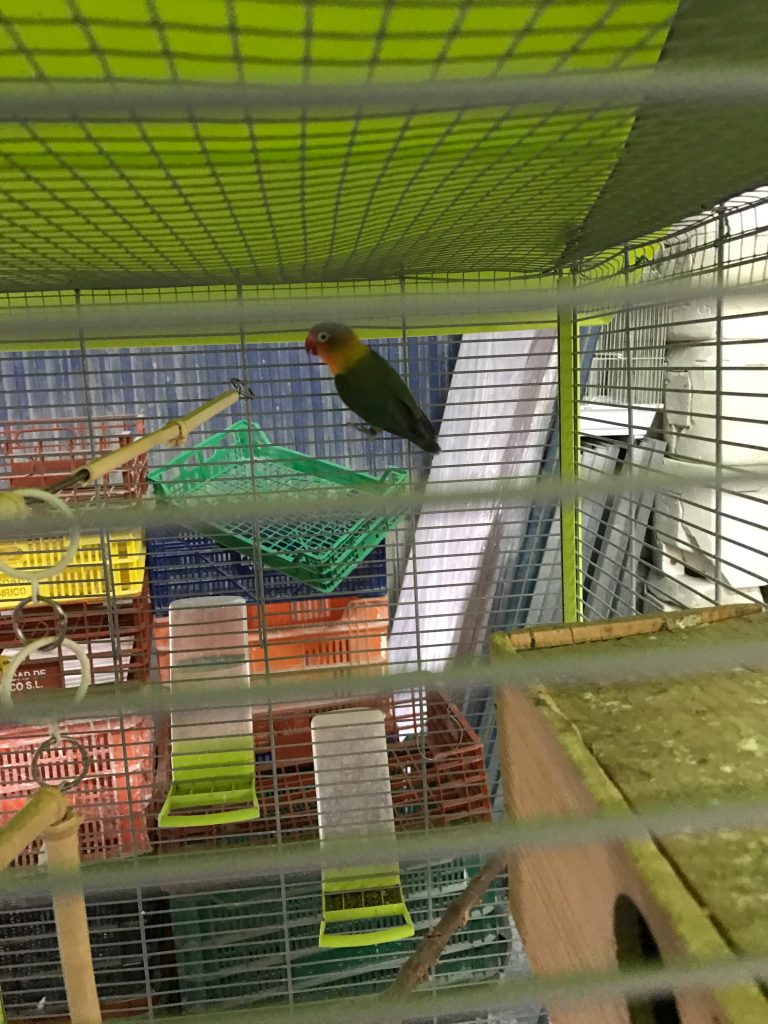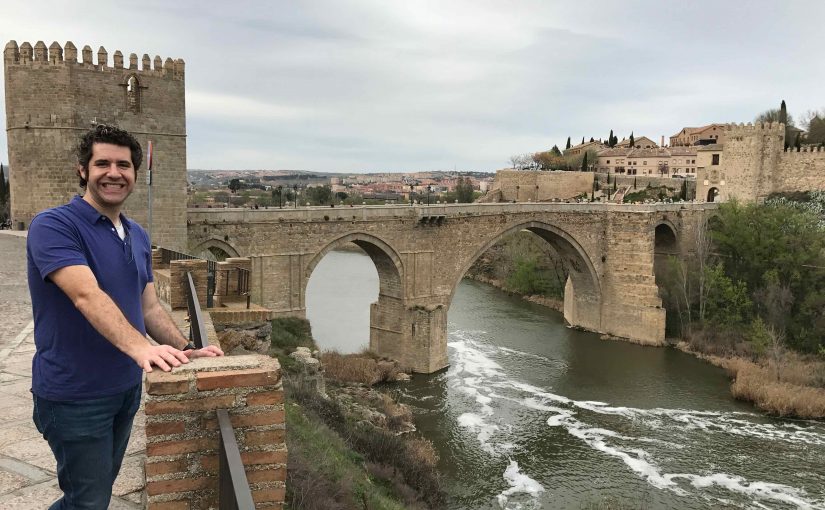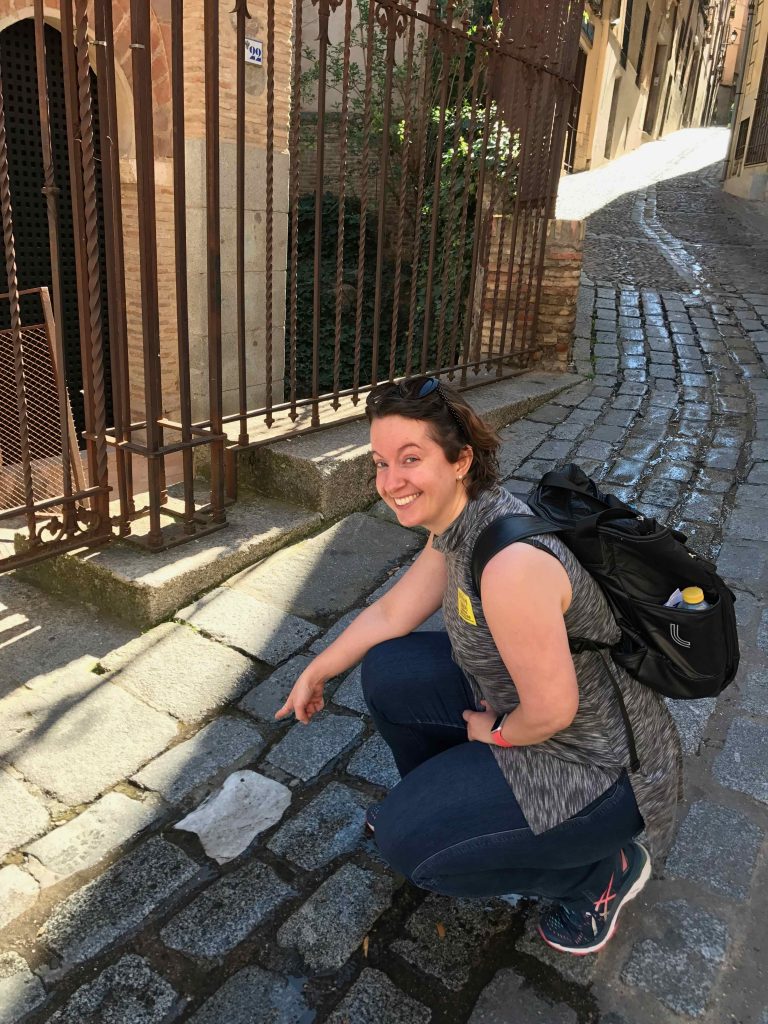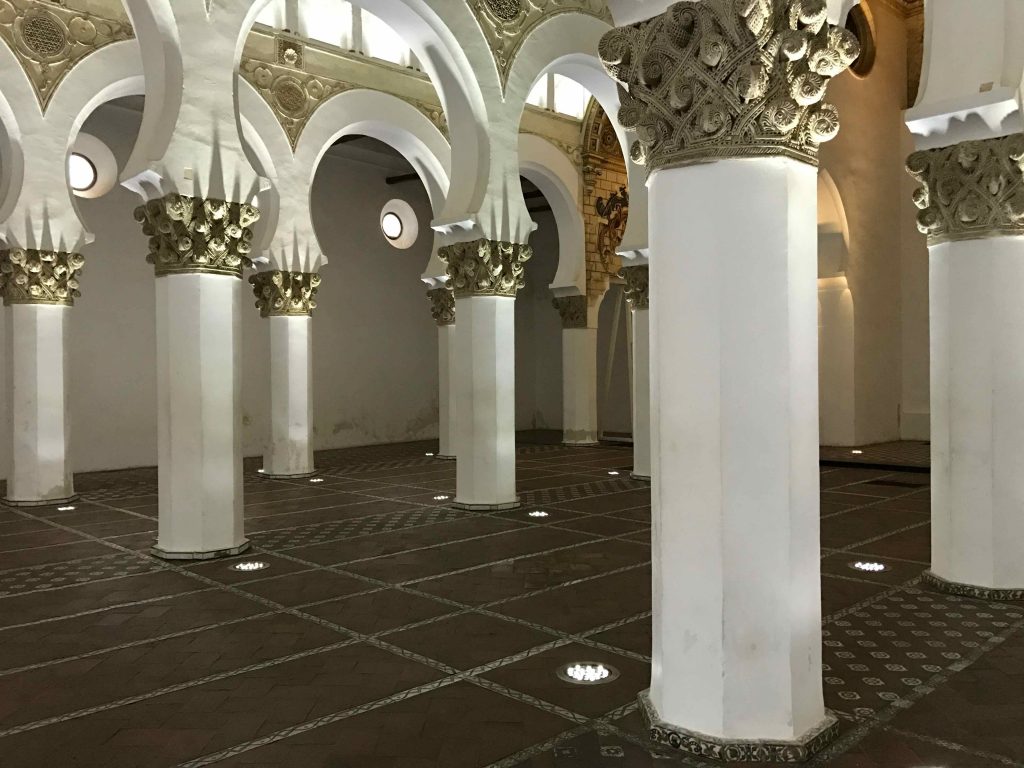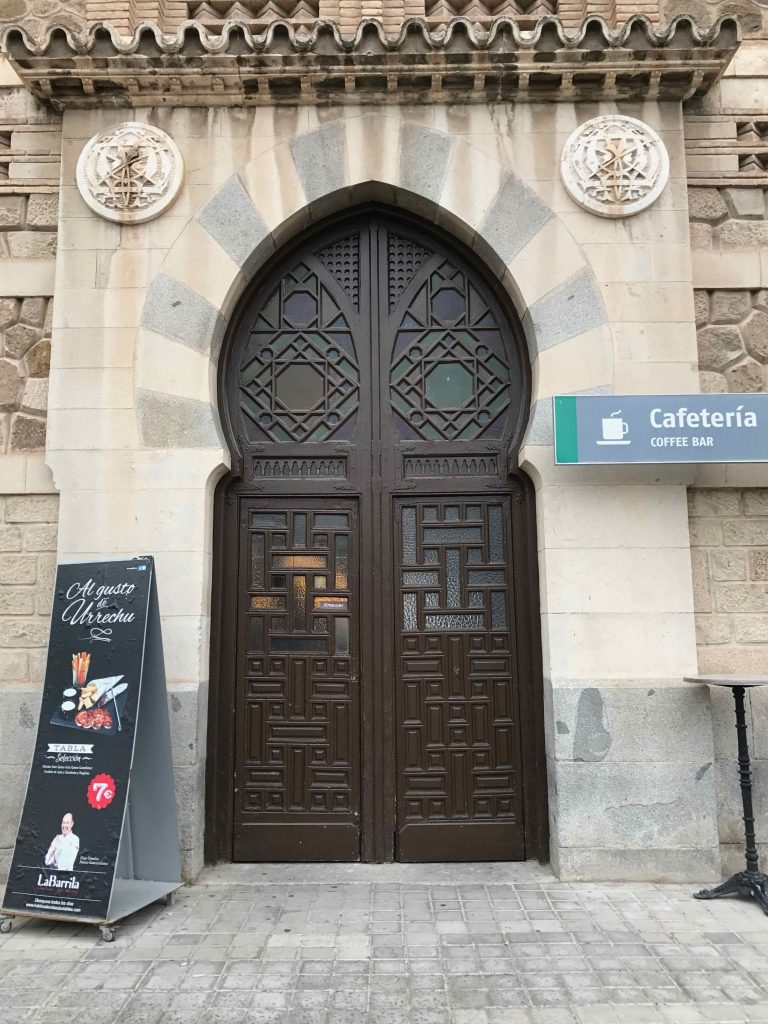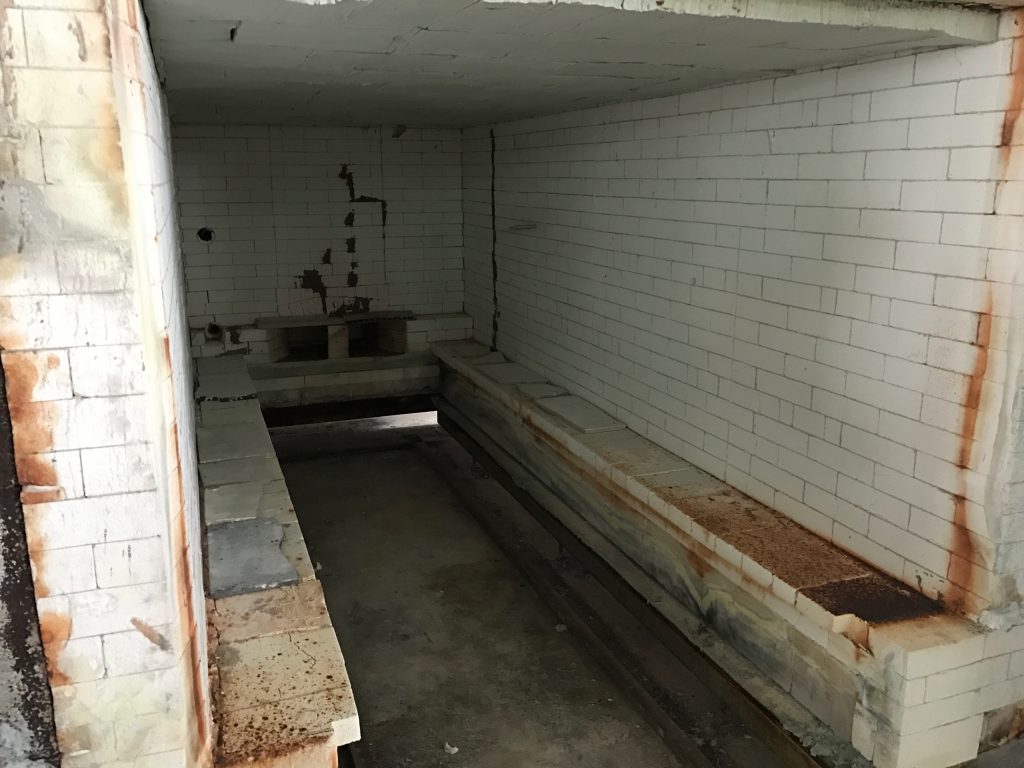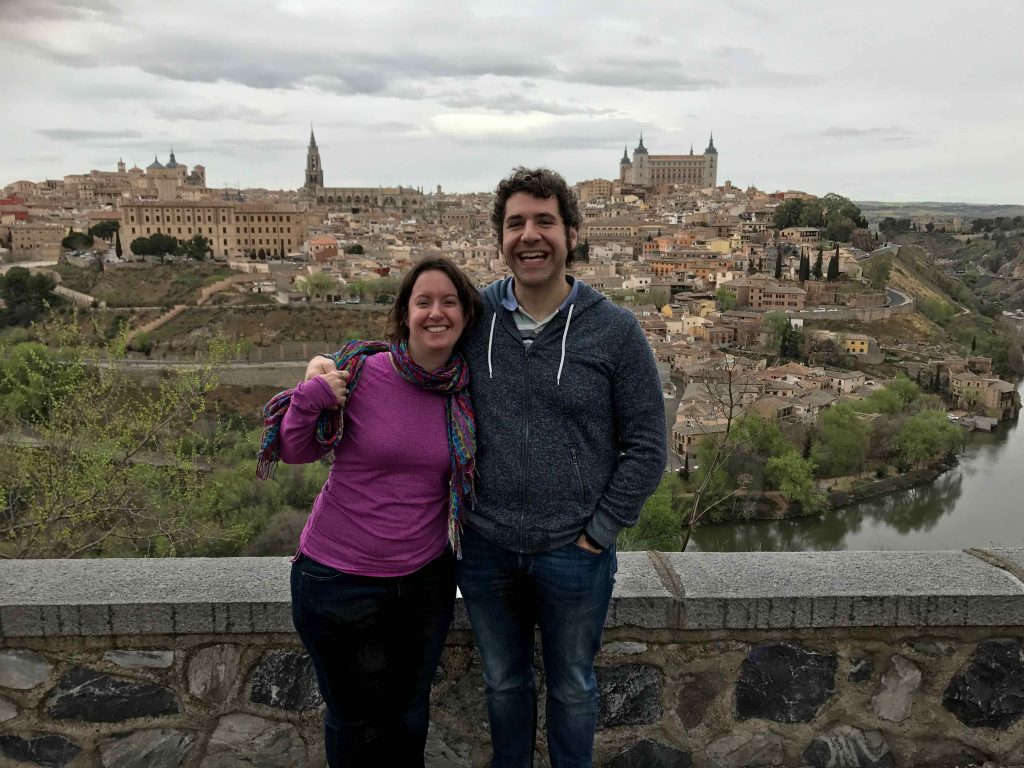
As American spring break approached, Dreamer’s Dad and his wife, Deb, who are teachers, took advantage of this time off to come see us.

We planned to meet them at the airport in Madrid and have a fun weekend in Toledo before returning to Valencia to see the start of Las Fallas, our region’s biggest holiday (more about that in coming posts!). We began this journey as many before it: with a commuter train into Valencia.

Despite the tardy train, everything worked out fine. We made our high-speed train connection with some time to spare, which is good, because our train car was waaaaaay out there. This being Friday night, apparently there were a lot of people getting out of town. The train went on further than the eye could see.
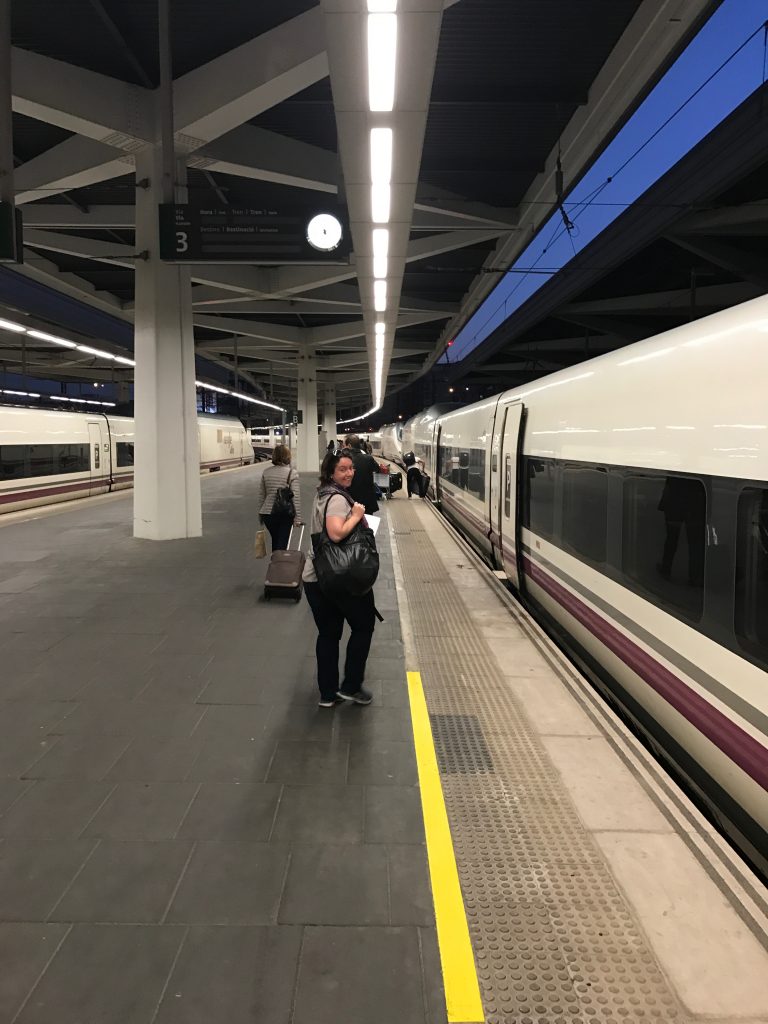

We had an uneventful journey to Madrid and set our sights on turning Dreamer’s frown upside down. Homemade Chinese noodles from the King of Noodles and tiki drinks to the rescue!
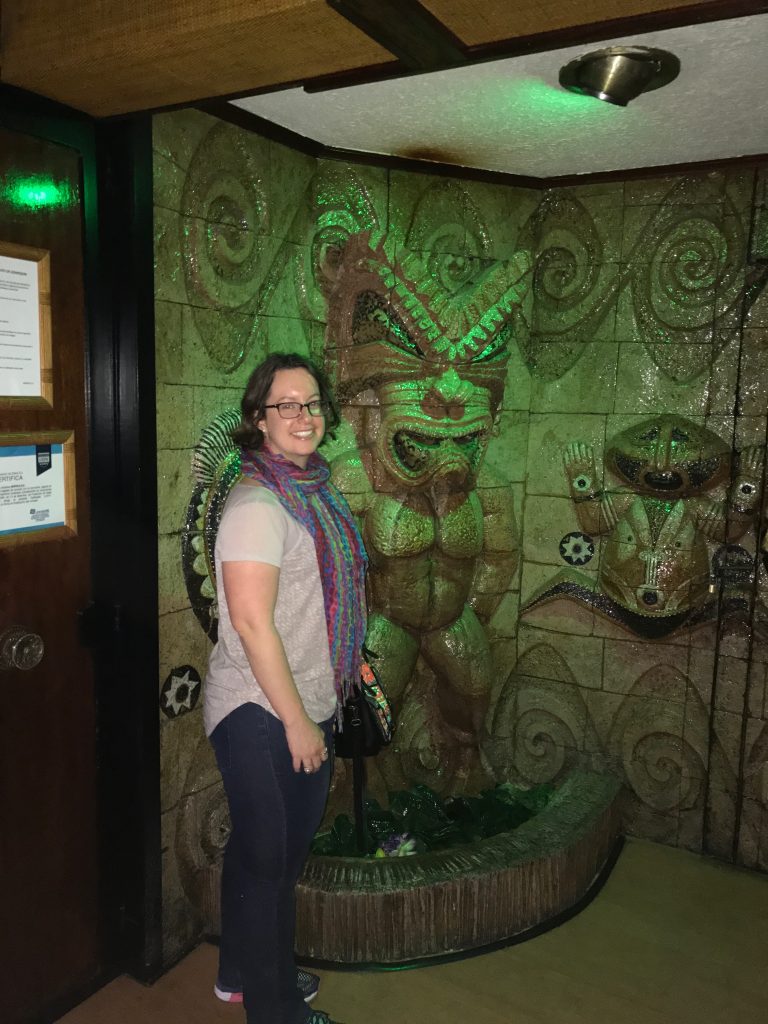

The next morning, we fetched Dad and Deb from the airport and headed to Toledo, which is about an hour south of Madrid. Doer had been before with his friend Daniel in 2000 and had great memories, but nobody else in our party had seen Toledo.

This is the view from our hotel: hot air balloons on Sunday morning.
Perched on a very high hill overlooking the plains of Castilla-La Mancha, Toledo is a very old city well known for centuries of coexistence among Jews, Muslims, and Christians (kind of like another city we visited), and all of those cultural influences can still be seen. In fact, UNESCO named it a World Heritage Site because of this and because of its extensive number of historical monuments.

Our visit started with the cathedral, which is huge, ornate, and a masterpiece of Gothic architecture in Spain.
The cathedral’s greatest treasure is the Monstrance of Arfe, pictured below.

The 16th-century creation of gold, silver, and gems stands over 10 feet tall, and it is used every year to commemorate the feast of Corpus Christi.
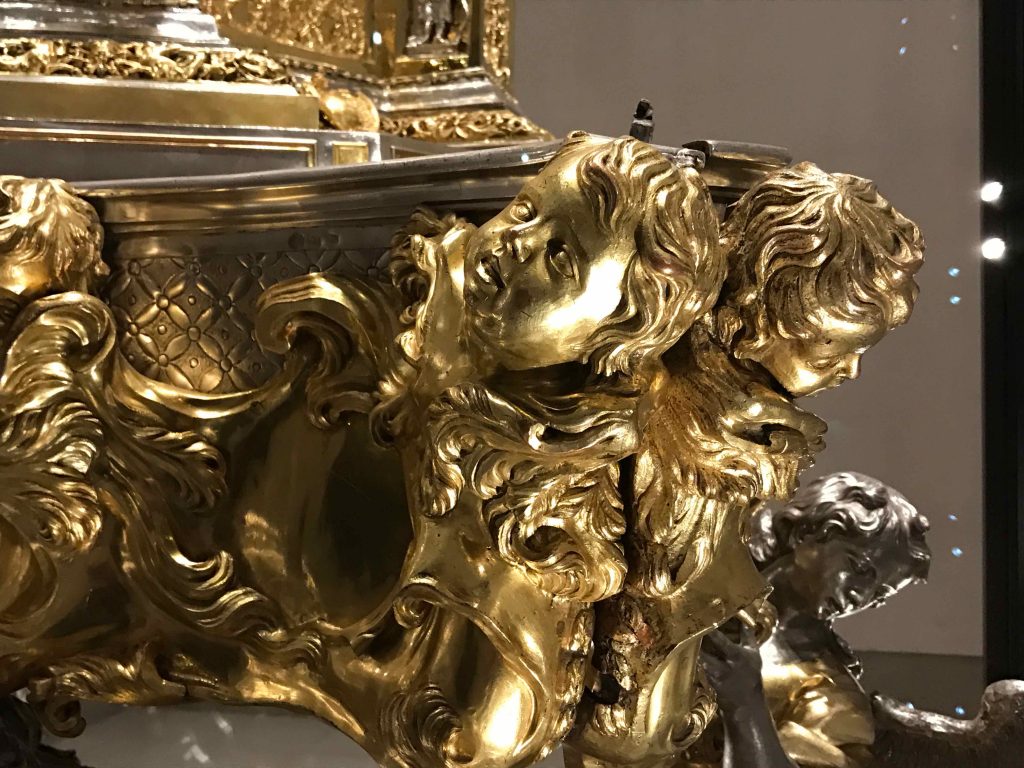

Look at the detail on that woodcarving!





Being a bit “churched-out” at this point, we found just the remedy.

Manchego is arguably Spain’s most famous cheese. Made from sheep’s milk and traditionally molded in esparto, its distinctive flavor speaks to the region for which it is named: Castilla-La Mancha, of which Toledo is the capital. Fun fact: esparto is known as atocha in Spanish, and this is also the name of the main railway station in Madrid.


We kicked off the next day with a quick visit to the Alcázar, a fortress which has protected and dominated the region from atop the highest point in the city since pre-Roman times. These days it also serves as a military museum.






Afterward, we set off on a free guided tour through the twisty, incredibly narrow streets of old Toledo. Inexplicably, locals are allowed to drive up there, which makes taking any kind of walking tour interesting. All the better on Sunday morning when workers are hosing the Saturday night merriment off the streets as well.
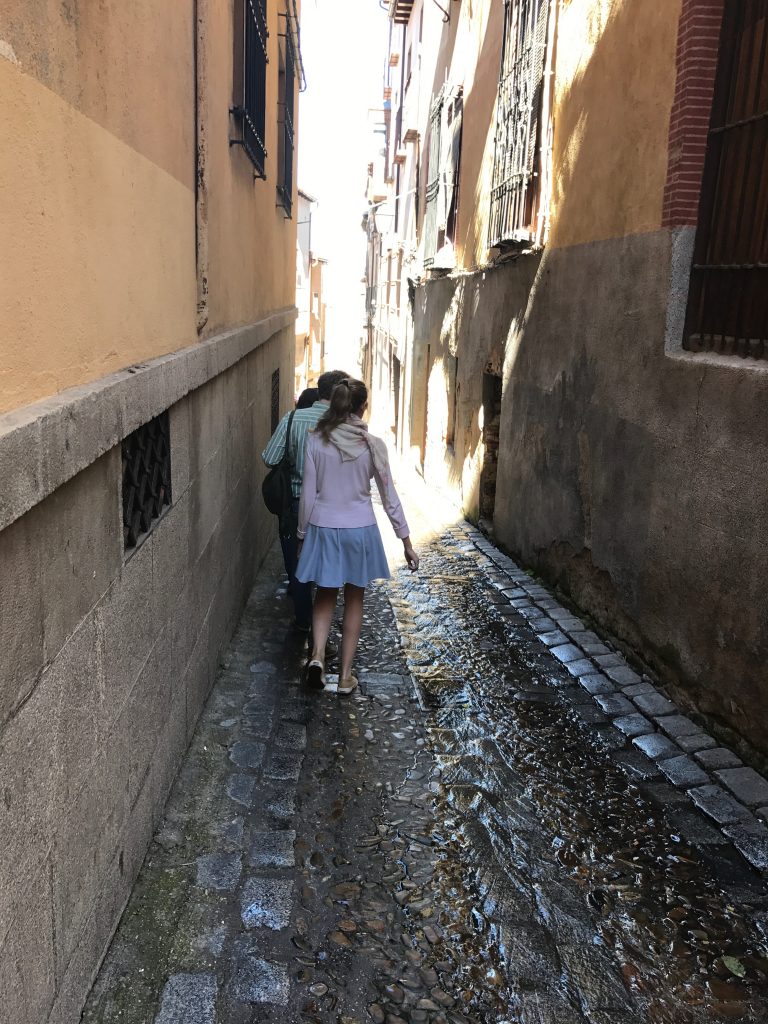

Our tour passed by an old mosque, The Mosque of Cristo de la Luz (Mosque of Christ of the Light). The name is a bit of a head-scratcher, no? Not to mention that cross topping the mosque.
The mosque was built in the year 999, when Muslims still thrived in Toledo. After Alfonso VI conquered the city in 1085, rumor has it he promised the mosques (or at least, this particular mosque) could stay in Muslim hands.
However, one day Alonso’s horse reputedly kneeled down in front of the mosque, refusing to move. Supposedly the animal did so in worship of an image or a statue of Christ, which purportedly had remained hidden in the building during Moorish rule, lit by a lamp all the while. A white stone out front commemorates the miraculous equine moment. It brings to mind a particular compound word beginning with “horse,” but we won’t get into it. At any rate, the mosque became a Christian church.

One encounters “layers of history” throughout Toledo. Below, ancient Roman ruins were uncovered beneath the mosque.
More Roman ruins in another part of the city.
In addition to its Muslim heritage, Toledo is famous for its old Jewish quarter, even though there are very few Jews left nowadays. We met an older Jewish man who said he had affixed the below sign to the side of the building, and he gave us directions to one of the two remaining old synagogues (two of three in all of Spain).
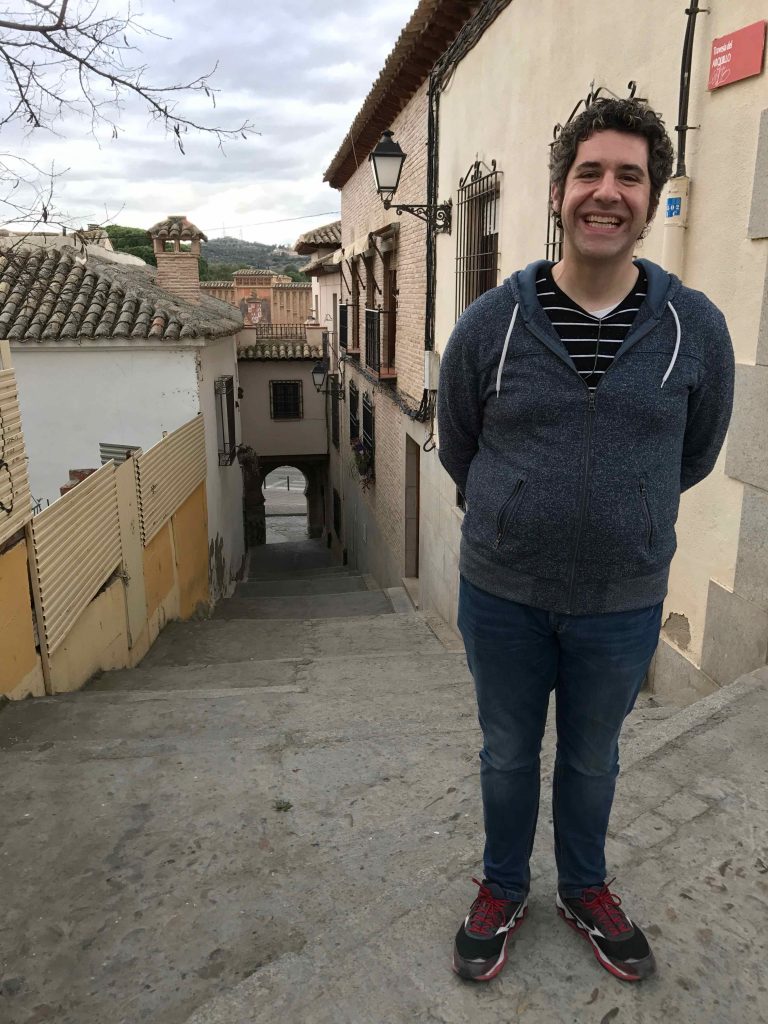

The man who gave us directions did not seem too pleased about the fact that the Catholic Church now owns both synagogues. Below, the Synagogue of El Tránsito in the distance.
Both synagogues feature rather… er, interesting architecture. Believe it or not, El Tránsito is the more Jewish-seeming of the two.


 Women’s gallery.
Women’s gallery.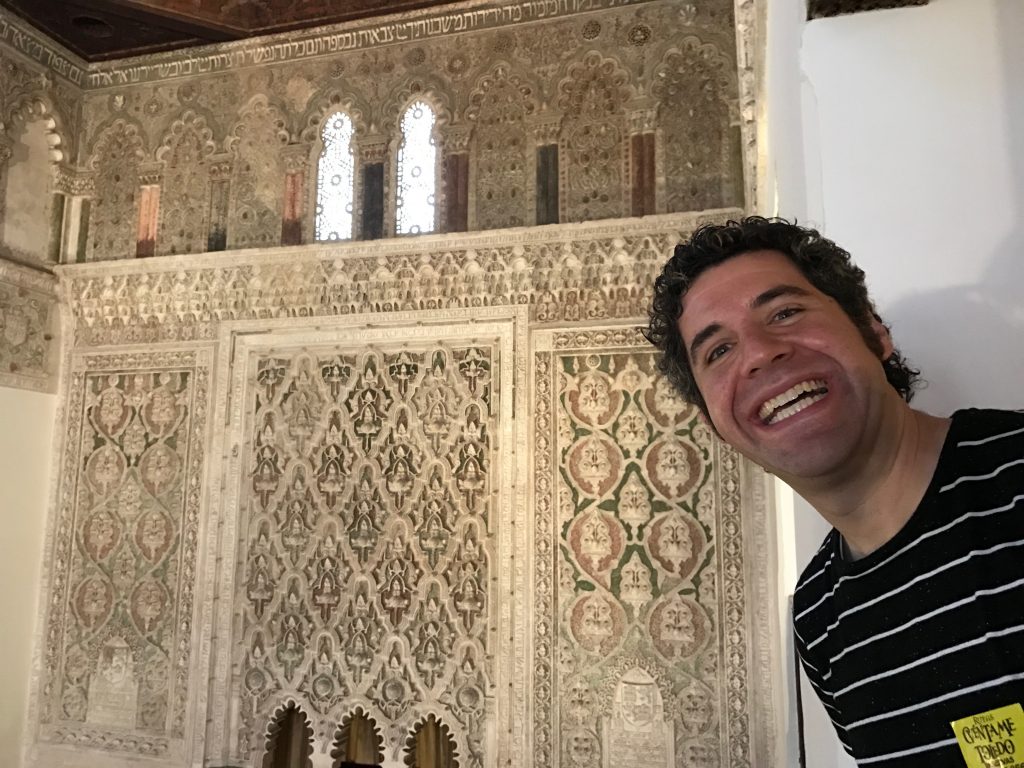

Many old buildings in Toledo, including the two synagogues, feature Mudéjar architecture, a style resulting from the coexistence of and influence between Muslim and Christian cultures.
El Tránsito was constructed in the 14th century during a time in which it was prohibited to build synagogues. The builder, Samuel Levi (below), came from a family that had long served Castilian kings, and he may have received special permission to build from the king to compensate the Jewish community for destruction in 1348 following anti-Jewish riots after the Black Plague arrived in Toledo.
Since the Jews were expelled from Spain in 1492, the Church took over and made some changes. Today there is a Sephardic Jewish museum inside, showcasing some of the customs and history of Jews in Spain.

We are used to Ashkenazic Jews and their customs, but Sephardic culture is distinct. Ashkenazim are much better known in U.S., having generally emigrated from Poland, Russia, and other parts of Eastern Europe. Sephardic Jews, on the other hand, were native to these parts and experienced a diaspora during the Spanish expulsion; we were not as familiar with their customs.


Sometimes, half the fun was seeing Hebrew terms transcribed into Spanish. Like Bar Mitzvah (English spelling) above.



Near El Tránsito, one can visit old cellars that formed the base of a palace in the Jewish Quarter.

As it happens, this synagogue is right next door to the El Greco museum, which is also in a cool old building.

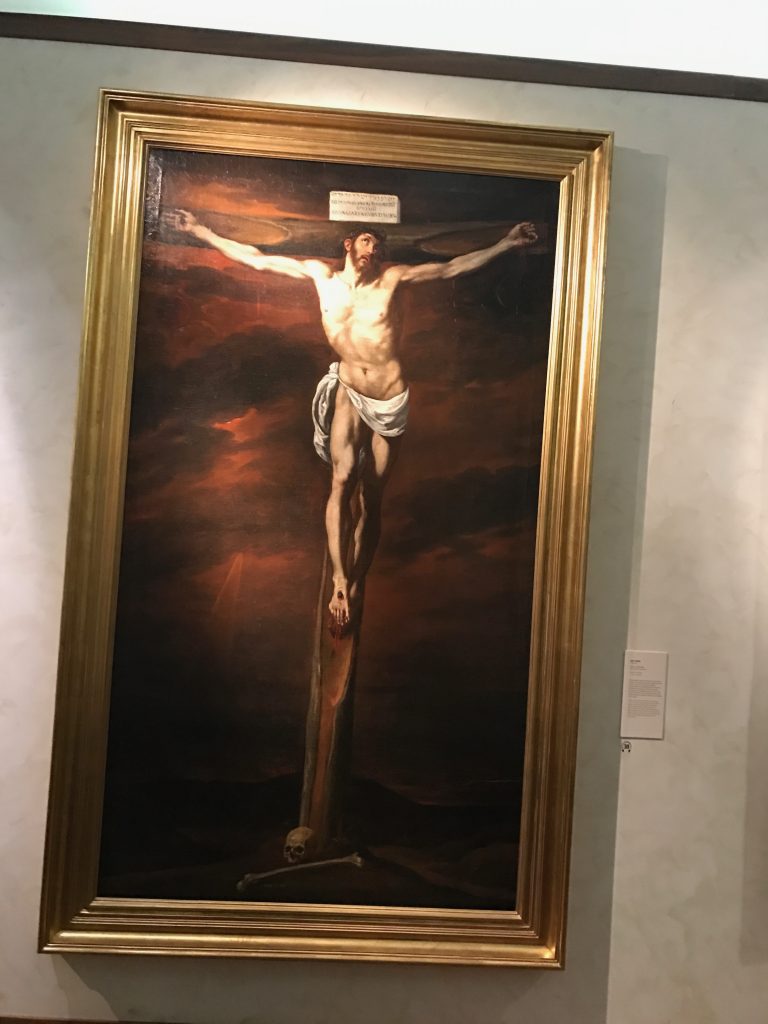
Dreamer was more impressed by the second synagogue than Doer, who thought it felt more like a church (maybe because it’s owned by one?).
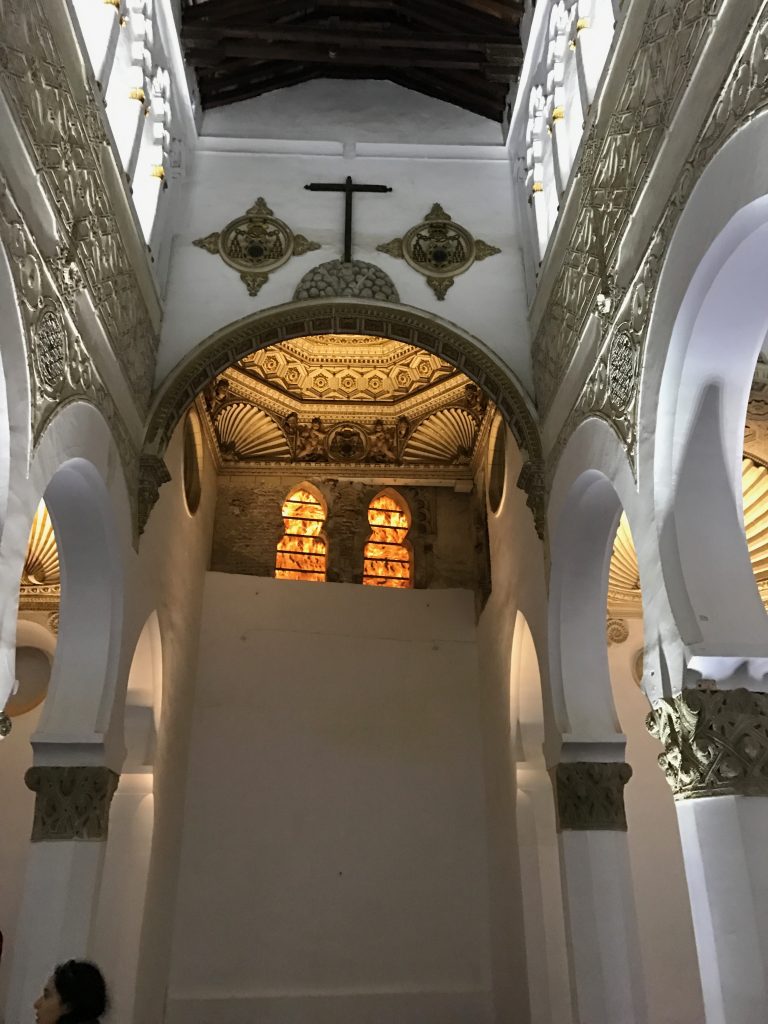
Erected in 1180, la Sinagoga de Santa María la Blanca (Synagogue of Saint Mary the White) may be the oldest standing synagogue in Europe. Built (in Mudéjar style) by Islamic architects in a Christian kingdom for Jewish use, the building remains a symbol of the coexistence between the three cultures.



While Doer couldn’t get past the non-traditional aspects of the synagogue’s aesthetics, he did think they had fun stuff in their gift shop.


Oddly enough, after this trip, Doer went back to his photo gallery from 2000 and found the following comment he had written:
Toledo is a very ancient city in mid-southern Spain. There is a lot of very old architecture there, much of which has been nicely kept-up and/or restored. Though I went with the idea of seeing a few of the famous old Synagogues, I left quite disappointed. One place we found was nothing but a very basic, open room; the other had been converted into a museum. Oh, well…
So, at least he’s consistent.
One thing he did remember in memories but not in name: the monastery – or specifically, the Monastery of San Juan de los Reyes, built by the Catholic monarchs (the famous Ferdinand and Isabella) between 1477 and 1504.
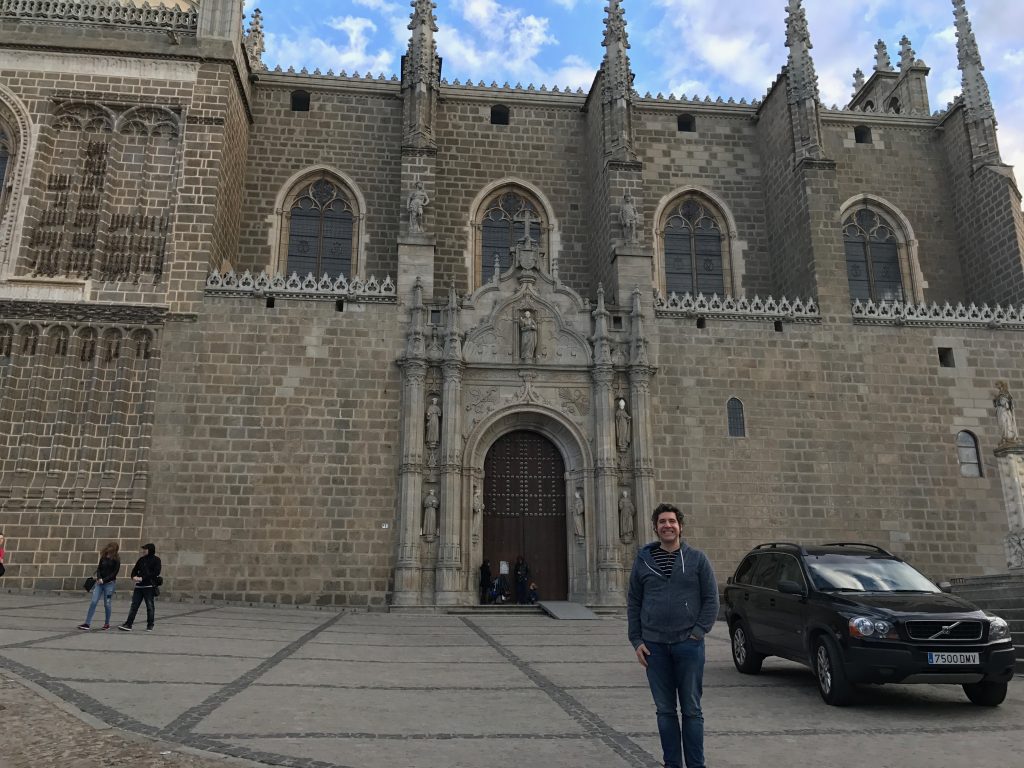


Pictures do not do this place justice. We tried, but many did not come out. This is easily Doer’s favorite place in Toledo. It’s so peaceful – bright and airy.




Mudéjar architecture is everywhere in Toledo, even the train station.





We ate well in Toledo, including visits to a couple different traditional Arabic places.


At other restaurants, we warned Dad about ordering a hamburger, but he did not heed our advice. Hamburguesa does not connote a bun here.
On our way back to Madrid, Dad and Deb got to experience – as they called it – “a Spanish truck stop.”

Like Barcelona, Toledo has public escalators to get pedestrians up the mountain – that is, if you can find them. We searched for a while and finally got to the point where one could go up and down easily. Seven escalators from bottom to top!

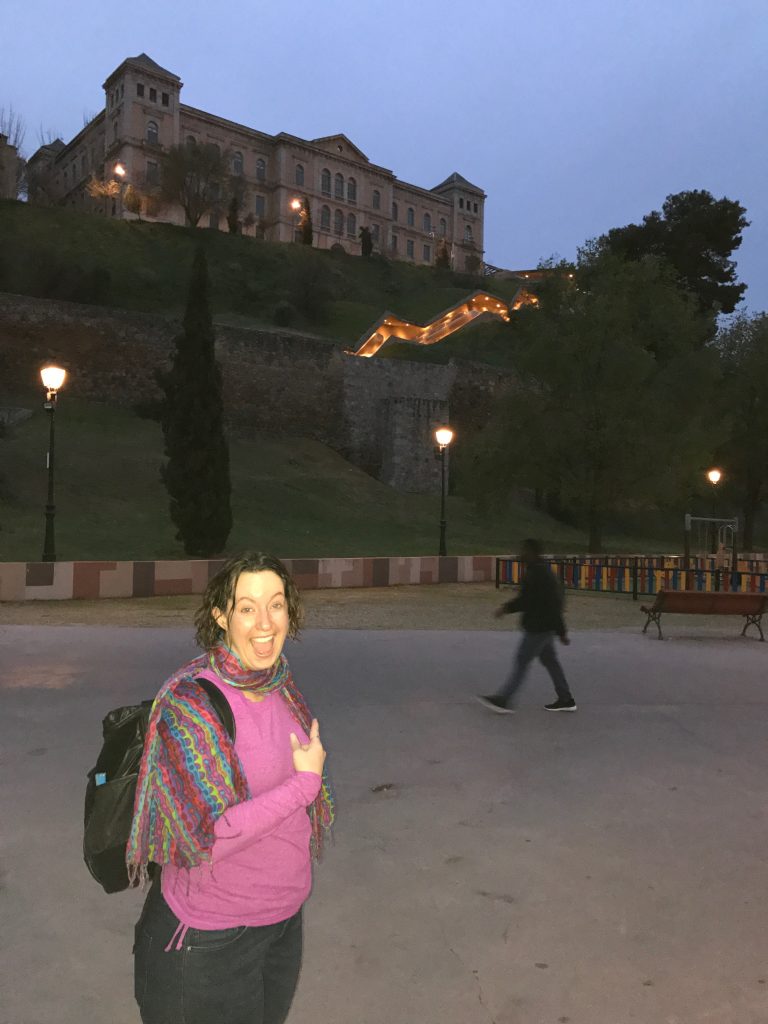
One experience we did not photograph, but that we don’t ever want to forget, is our time at Medina Mudéjar Arabic Baths, which is modeled after traditional baths (it may even be on site of some former baths). They set out some traditional Arabic style tea and sweets for us before we sampled the baths of three different temperatures. There also was a magnificent sauna that felt like the womb, and we all enjoyed quality massages. Dreamer would like to go back to Toledo for the express purpose of enjoying those baths again.
We did plan one side trip from Toledo: regular readers of our blog will know we are huge tiki fans. Porcelanas Pavon has been making tiki mugs and other ceramics by hand since… well, the last time tiki was popular. They supply every tiki bar in Spain and beyond. Here is their catalog, which seems not to have changed much over the past 40 years.

This is truly a family business, with Mom running the show since her husband passed away. The kids work in the factory and there seem to be no other employees beyond that. They were beyond welcoming when we called to inquire about a tour, and when we arrived, we were ushered into the factory, where nothing was off-limits (unlike another recent porcelain factory tour).

The process begins as liquid porcelain is pumped into molds.

The molds sit for up to an hour; the time depends on the size of the piece being made. The molds actually wick moisture from the liquid, meaning the outside is soft-set. The mold is then flipped over to drain out all the still-liquid porcelain inside. This is then recycled into the next batch along with any trimmings.
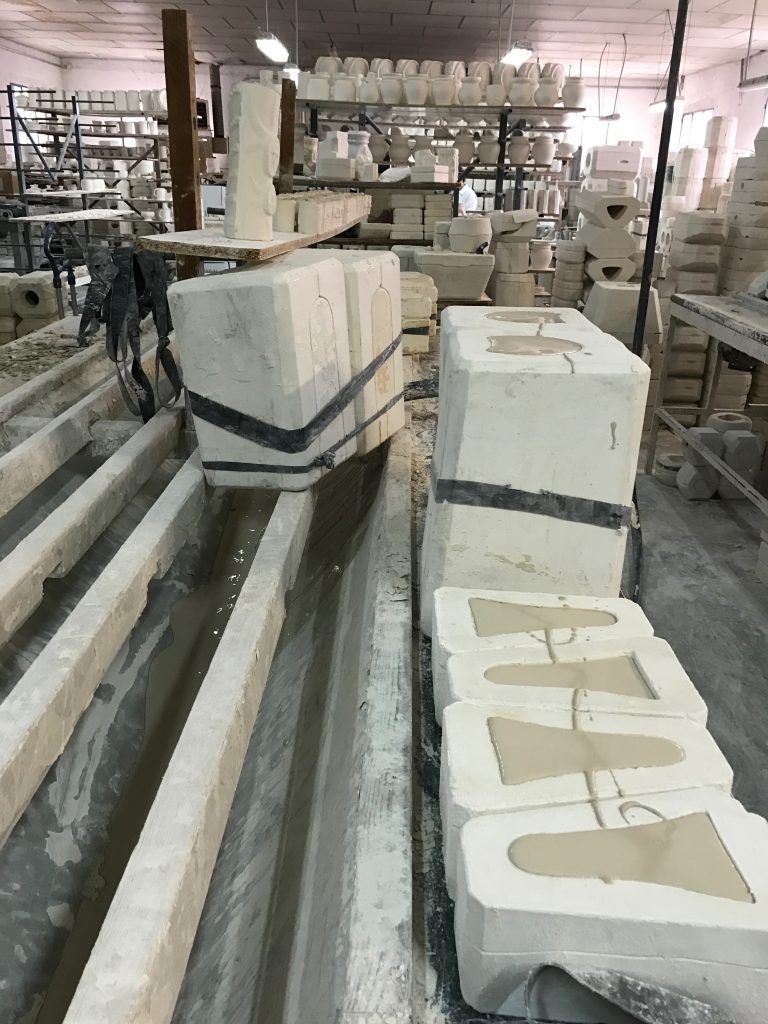
Some pieces are comprised of two or more parts, which have to be stuck together after un-molding.

Next, the mold lines are cleaned off, the top smoothed and rounded, etc. Remember, the porcelain clay is still very soft at this point.
The pieces are allowed to dry, dipped in a solid-color glaze (white, black, blue, etc.), then fired in the kiln at a high temperature.


The glazed porcelain is then hand-painted. This is the only part of the process we didn’t see because the brother responsible for painting does it at home! No joke. Old menus and catalogs are used for models of what colors to paint where.

